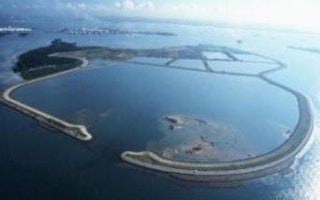Singapore’s waste, water and green building industries should have a good year ahead due to the government’s on-going commitment to meeting environmental targets, predicted an expert at global consulting firm Frost & Sullivan.
Malaysia-based Frost & Sullivan industry manager Melvin Leong, who is currently conducting related research for a private client, told Eco-Business in an interview that the Singapore government’s push to meet continuously evolving environmental targets has helped create ample market opportunities for several industries.
He singled out waste management, water technology and green buildings as industries that the government has identified as priorities and demonstrated a willingness to support with government spending and incentives.
Government spending in these areas is unlikely to diminish in the near term; and because many of the related projects are public-private partnerships, they will continue to draw private investment as well, noted Mr Leong.
Waste management is one of the issues seen as pressing by the government due to Singapore’s limited land area. The Republic’s environmental plans, including those published in the Singapore Sustainability Blueprint released in 2009 and more recently in the Singapore Green Plan 2012, highlight the need to minimise waste generation and maximise recycling.
Mr Leong said that Singapore is about to reach its target of a 60 per cent recycling rate this year, which will serve to increase the lifespan of the Republic’s Semakau landfill by an additional 20 years. It will also decrease the frequency of new landfill construction from its previous rate of every 7 to 10 years to every 10 to 15 years.
He added that the government is likely to continue to improve its waste recycling rate to achieve its long-term target rate of 70 per cent by 2030, and that its expenditure on waste management, including electronic waste, would remain steady in 2012.
As a result, “2012 and beyond is expected to see an active market development in Singapore’s waste management sector,” said Mr Leong based on his analysis.
Some of that development may be in the recycling industries, boosted by a new regulation announced last Tuesday that mandated reporting on waste minimisation and recycling efforts by large hotels and retail malls.
Another industry that is central to Singapore’s environmental strategy is the water sector.
In 2011, several foreign companies invested heavily in Singapore’s water sector.
United Kingdom-based water company Severn Trent began constructing a water disinfectant system, expected be operational in 2013, in Singapore’s Lower Seletar Water Treatment Plant.
German-headquartered Siemens enlarged its crew at the Singapore Research Centre to enhance its work on membrane technology.
In the face of such international competition, Singapore’s own water companies demonstrated strong showing, noted Mr Leong.
Local water specialist Hyflux was selected by Singapore’s national water agency PUB in March last year to commission a new desalination plant in Tuas. The project, worth S$890 million, was the biggest for Hyflux to date.
Keppel Seghers, another Singapore-based company which operates the Ulu Pandan NEWater Plant, now provides water for people in central and western Singapore.
These Singapore companies are venturing abroad to countries such as China, India and those in Middle East and North Africa. To duplicate its success in Singapore, Keppel Seghers has partnered with the Public Works Authority of Qatar to build Doha North Sewage Treatment Works, which will serve an estimated 900,000 people when completed.
However, Mr Leong said that political turmoil in North Africa and the Middle East may pose a challenge for Singaporean firms seeking to expand in the region.
Back in Singapore, companies within the green building industry are poised to do well despite a ‘stagnating’ overall construction market, which has registered less than 5 per cent quarterly growth since late 2010, he noted.
“It is imperative that companies in Singapore’s building construction market should reprioritize and focus on projects and activities that may be deemed less uncertain,” said Mr Leong, referring to new and existing residential green building projects, as well as projects in the hospitality and tourism industry.
Singapore’s Building and Construction Agency has set a goal of greening 80 per cent of its buildings – 60 to 70 per cent of which are residential - by 2030, and the regulation and policies are in place to make that happen, he noted.
The government currently requires all buildings over 2,000 square metres - both new buildings and existing buildings undergoing major retrofits - to meet minimum energy efficiency requirements.
Last year, Singapore’s building authority launched a pilot financing scheme that enables building owners to get bank loans of up to S$5 million to retrofit their building to a greener standard, and at the same time announced it would introduce legislation requiring audits of cooling systems every three years for large buildings.
Government agency green building pilot projects, such as Punggol Eco Town - which was launched by Singapore’s housing agency in partnership with Japanese electrics firm Panasonic in 2011 – lead to more opportunities for companies that supply green building technologies, said Mr Leong.
Panasonic brought its home energy management technology from Japan, where it is well established, to Singapore because the Republic is receptive and has the money to invest, he noted.
He predicted that if the test project is deemed successful, which is largely anticipated within the industry, demand for such technology will spread to other projects within both the public housing and the private housing sectors.
Mr Leong added that many technology trends, including solar electricity, building automation controls and rain water harvesting, start with government projects before they are taken up by private investors.
However, he cautioned that uptake within the private sector may be hampered in the short term by insufficient incentives such as tax rebates.
“Building owners will not be ready to invest during grim economic times, unless there are some forms of financial assistance,” he said.

















